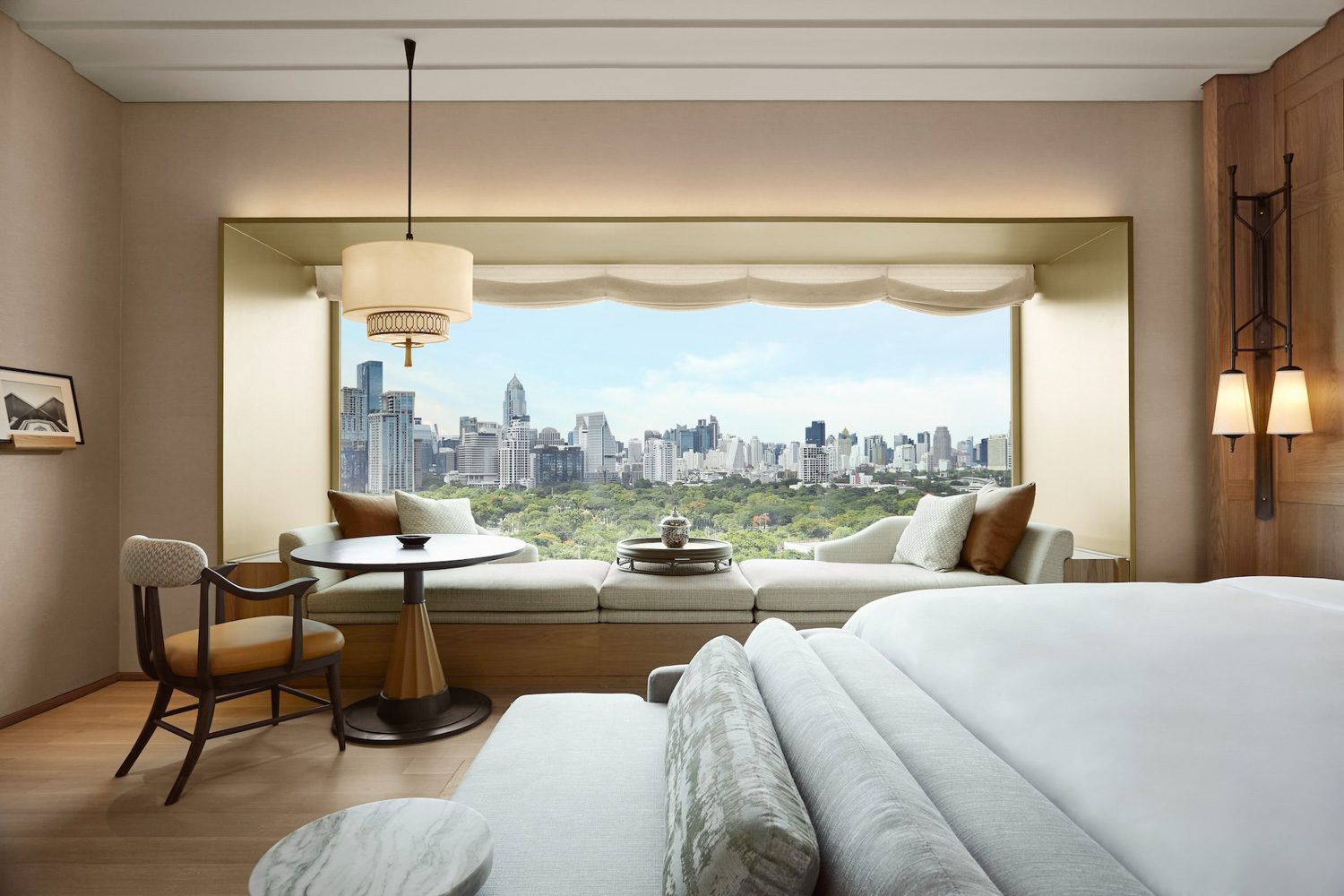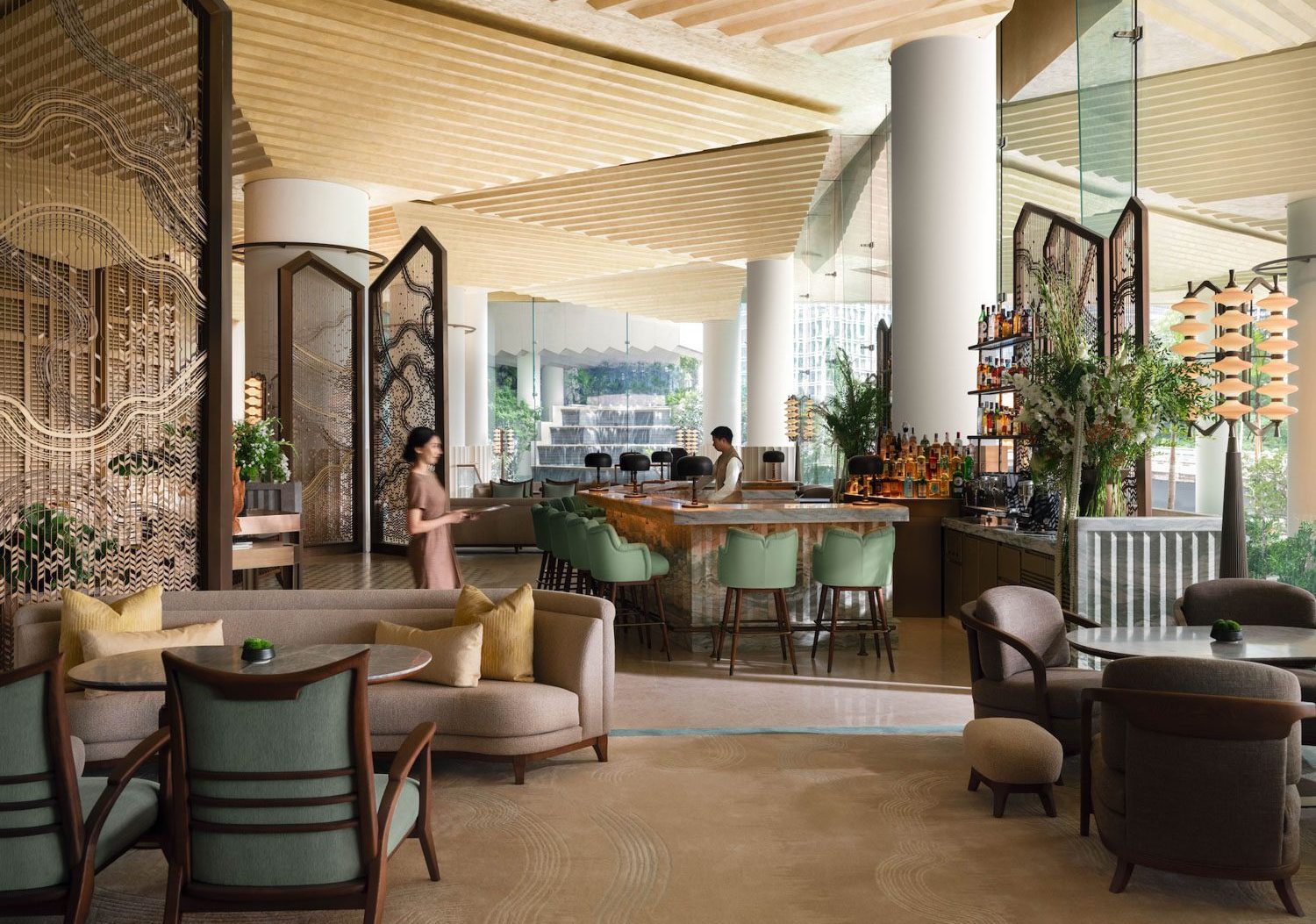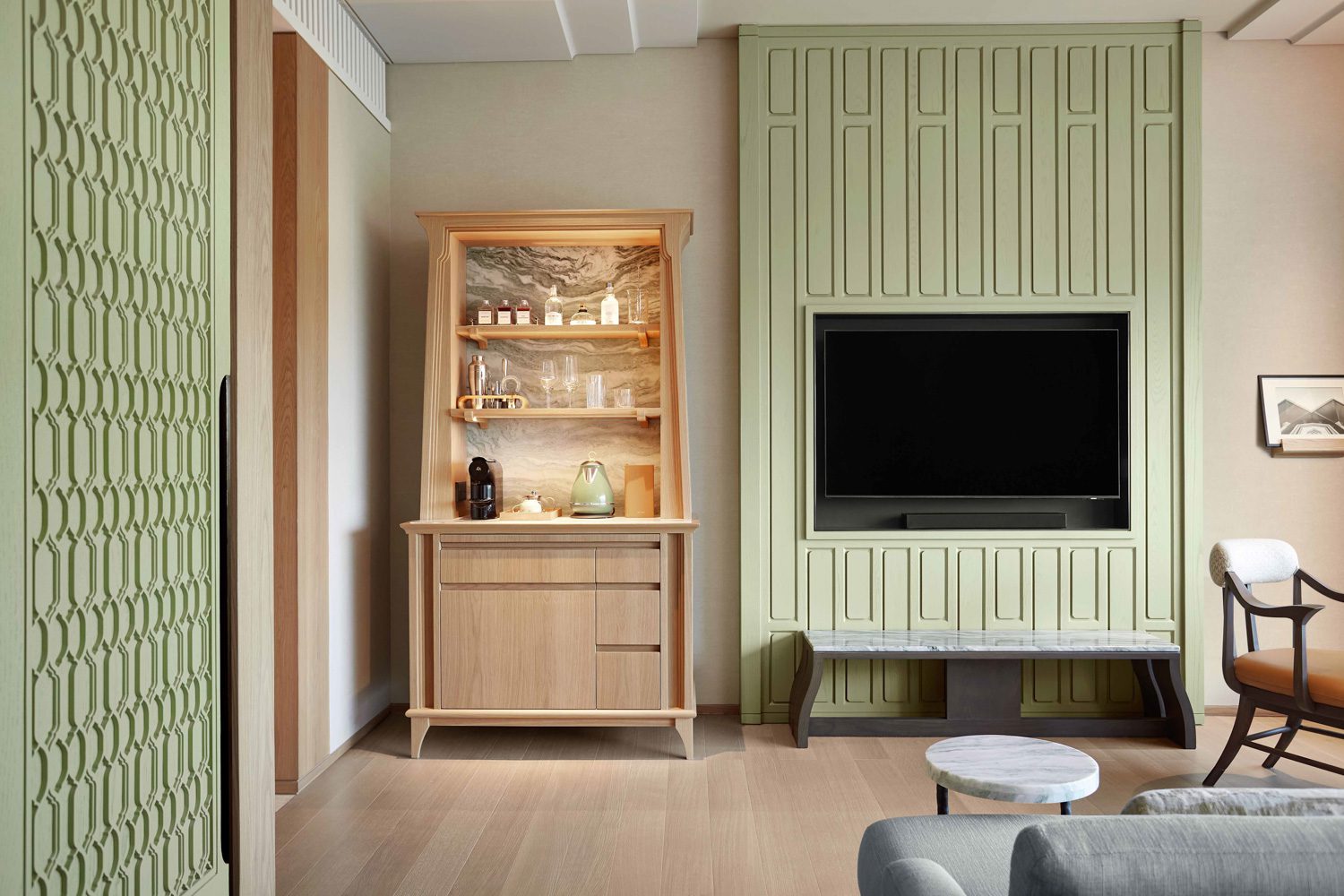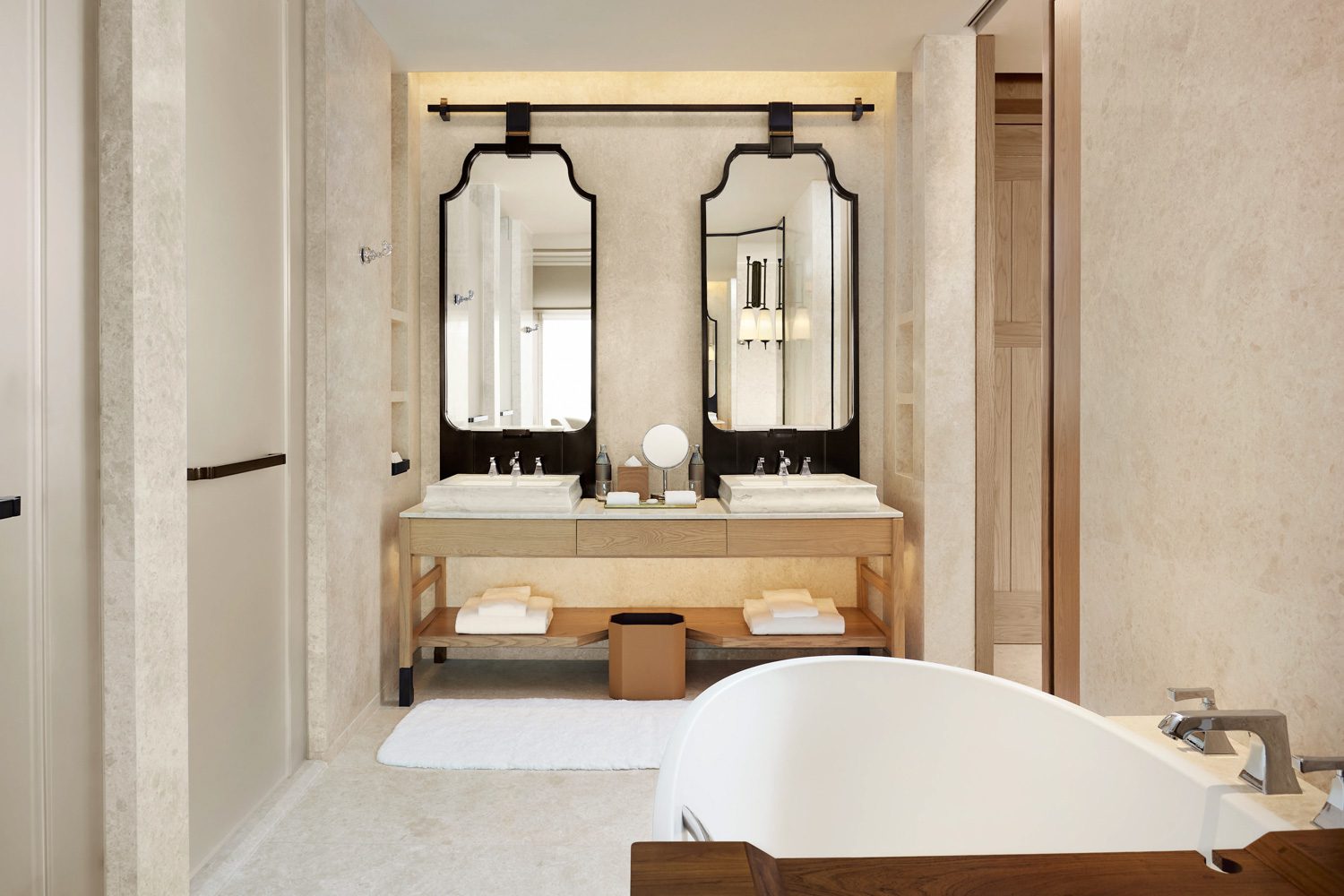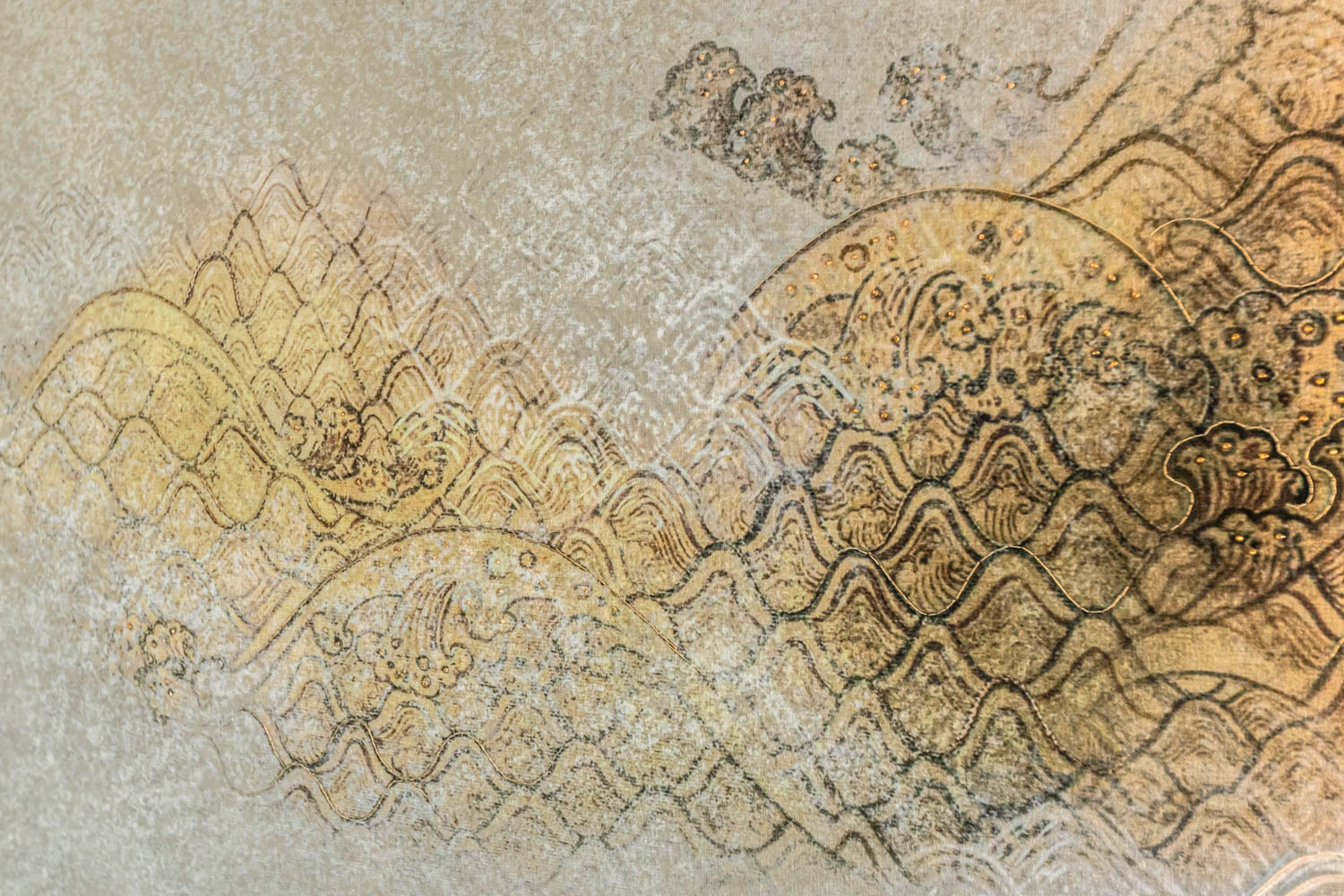DUSIT THANI BANGKOK HOTEL HAS BEEN NEWLY REIMAGINED UNDER THE CONCEPT ‘AN ICON REIMAGINED,’ BLENDING TRADITIONAL THAI ELEMENTS WITH MODERN FUNCTIONALITY. READY FOR GUESTS TO EXPERIENCE A FRESH PERSPECTIVE OF BANGKOK
TEXT: NATHATAI TANGCHADAKORN
PHOTO COURTESY OF DUSIT THANI BANGKOK EXCEPT AS NOTED
(For Thai, press here)
After years of anticipation, the iconic Dusit Thani Bangkok Hotel finally reopened its doors on September 27th, unveiling a transformation that melds the past with the present. Designers and architects alike may already have recognized how this storied establishment has been reinterpreted under the concept ‘An Icon Reimagined,’ heralding a fresh epoch for Dusit Thani.

This extensive renovation was executed through a partnership led by Dragon Company Limited, a Thai firm created by two prominent architectural entities—Architects 49 International Limited and OMA Asia (Hong Kong) Limited, who took charge of the complex structural transformations. Meanwhile, P49 Deesign & Associates were chosen to oversee the refurbishment of the exclusive Heritage Floor with their design expertise. Elevated to 39 stories, the hotel now features a remarkable offering: each of its 257 guest rooms provides expansive views of Lumpini Park, showcasing lush greenery against the backdrop of Bangkok’s ever-changing skyline. Employing a single-corridor floor plan, the design ensures that every room, from the most intimate to the most expansive, provides a fresh perspective of Bangkok through vast, seamless glass panels. This thoughtful approach extends to the Napalai Grand Ballroom, perched above the lobby, capturing the cityscape in what the design team aptly calls ‘Golden Frames of Memories’—a keyword resonating throughout the Dusit Thani Bangkok’s re-envisioned spaces.

Photo: Ketsiree Wongwan
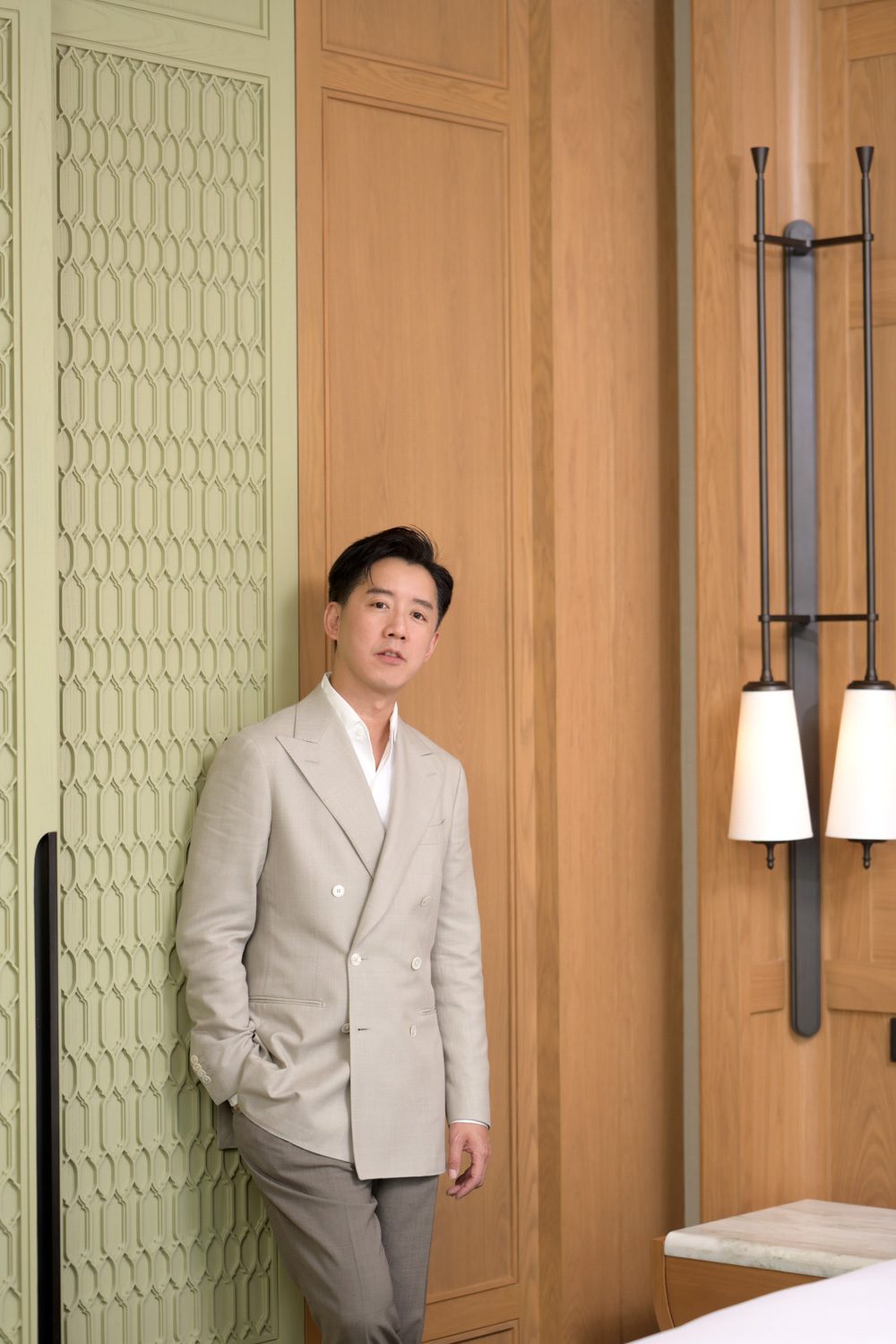
André Fu, the founder of André Fu Studio
Interior design—a critical element in conveying the rich Thai spirit of the Dusit Thani—was orchestrated by Hong Kong-based André Fu Studio in collaboration with the hotel’s in-house team. Their challenge was to balance preservation with innovation to meet the evolving needs of today’s guests. The outcome is a harmonious blend that honors the original essences of the legendary establishment. Among them are the paintings by Paiboon Suwannakudt on the two main pillars, which have been meticulously conserved and now complement the adjacent bar, serving as focal points in the new lobby. Intricate wood carvings and golden teak wall decorations were carefully dismantled and reassembled, echoing the of the iconic golden spire and cascading waterfall tiers on the building’s exterior that have also been retained.
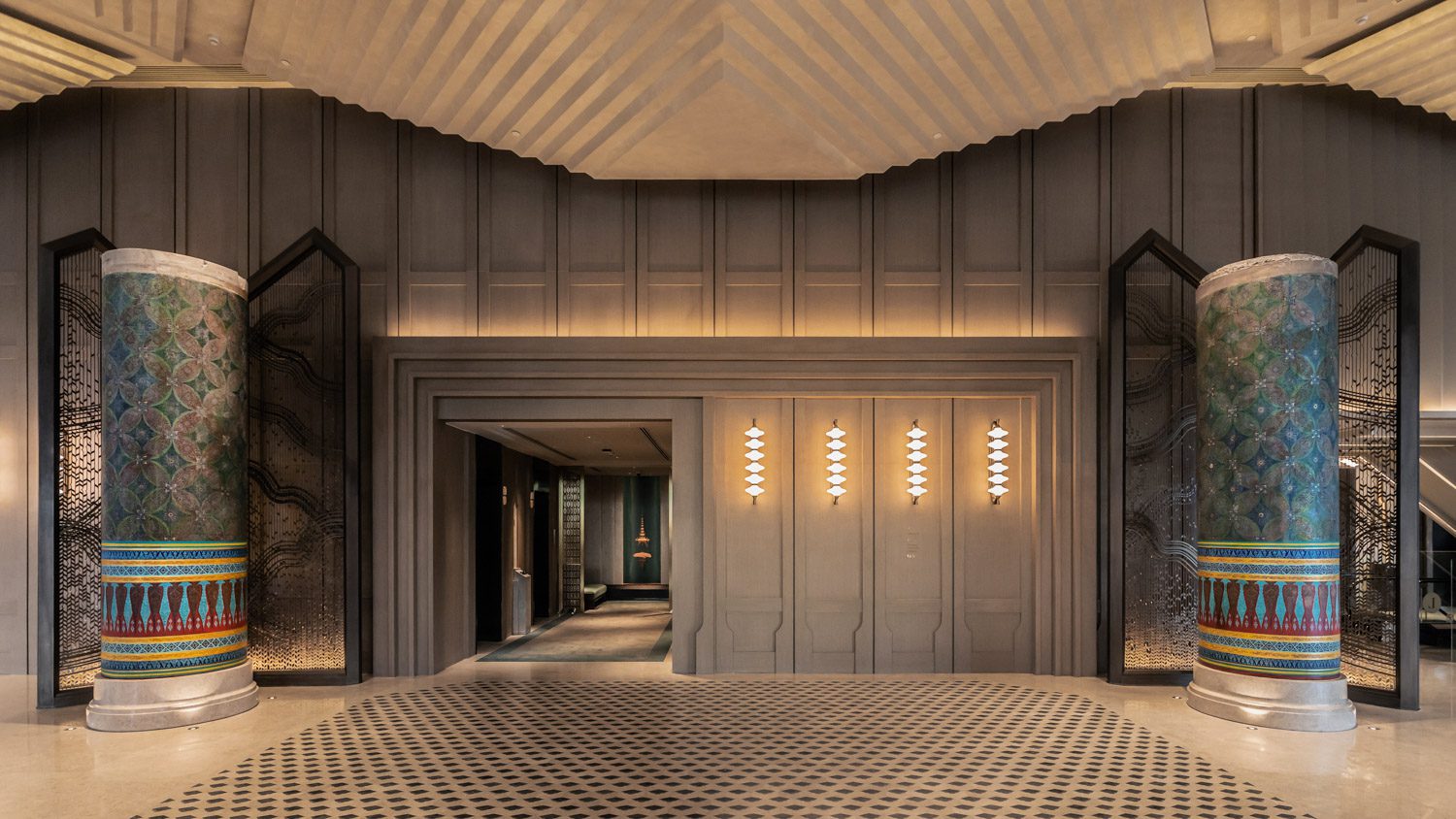
Photo: Ketsiree Wongwan
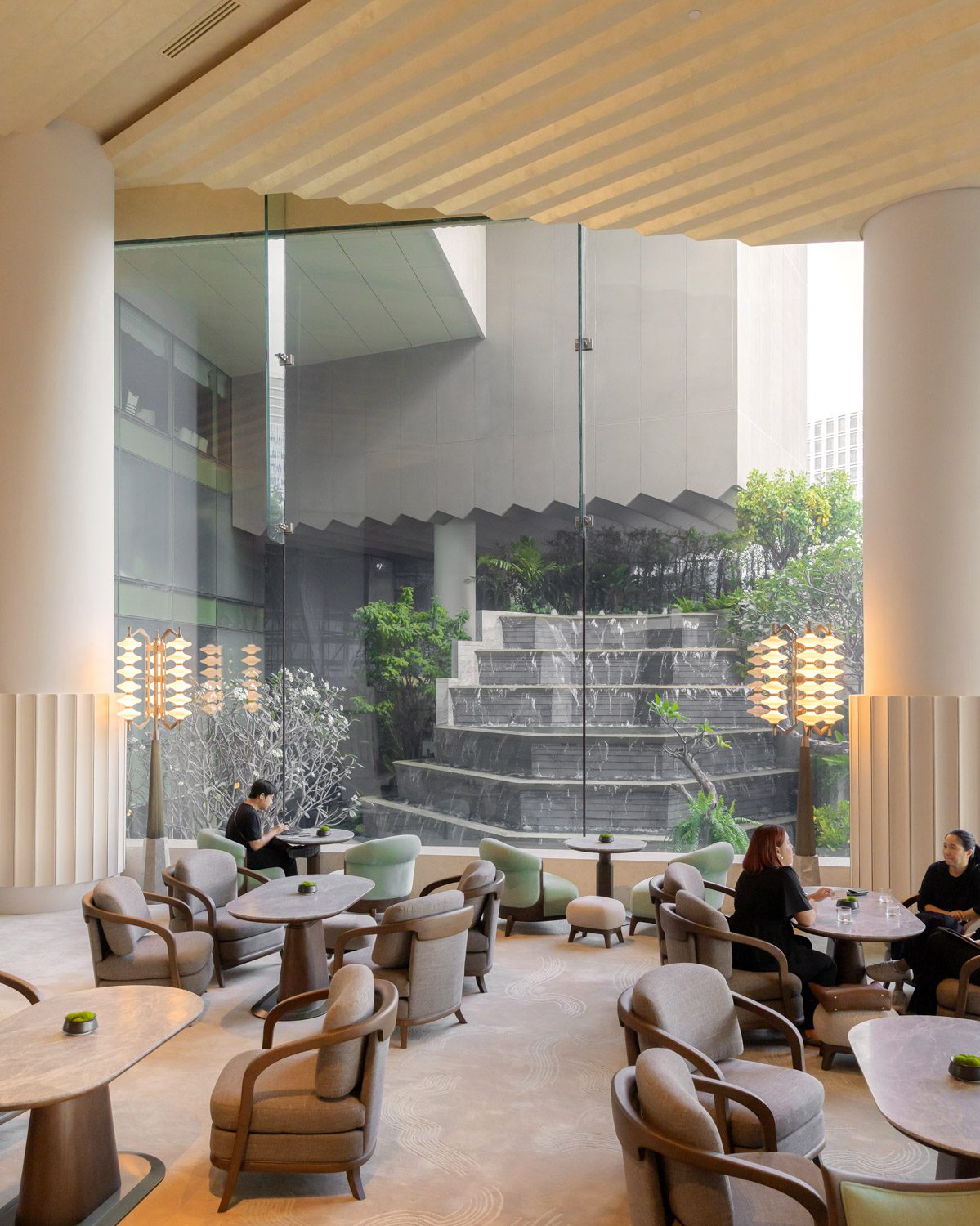
Photo: Ketsiree Wongwan
These preserved elements from the past are integrated seamlessly with the newly renovated components, achieving a cohesive and contemporary aesthetic. Recognizing the lobby’s role in shaping guests’ first impressions, the design team introduced floating partitions to divide the expansive space into more intimate sections, addressing the disparity between human scale and the grand architectural volume. The lobby ceiling features adapted original patterns interwoven with geometric shapes connected to octagonal motifs found in other parts of the hotel, affording greater creative freedom beyond traditional Thai design conventions. Further enriching the narrative, the very name ‘Dusit’—derived from Sanskrit ‘Tusita,’ one of the six heavens in Buddhist cosmology—is interpreted through cloud motifs symbolizing the sky. This ethereal theme manifests in tile patterns, lamp designs, and decorative ironwork throughout the hotel. Despite the multitude of elements woven into this iteration of Dusit Thani Bangkok, the design team has achieved a beautifully unified and distinctive aesthetic that feels both harmonious and inviting.

Inside the guest rooms, wooden walls modeled after traditional Thai ‘fa pakon’ paneling add depth and playful variations in materials and planes. Soft tones, natural wood hues, and light green accents strengthen the connection to the nature outside. This interior strategy offers a marked contrast to the hotel’s restaurant, which retains the name ‘Pavilion’ but has been reimagined to embrace a tropical aesthetic. Here, the vibrant colors energize the space, enriching the exquisite dining experience of Thai and Chinese cuisine.
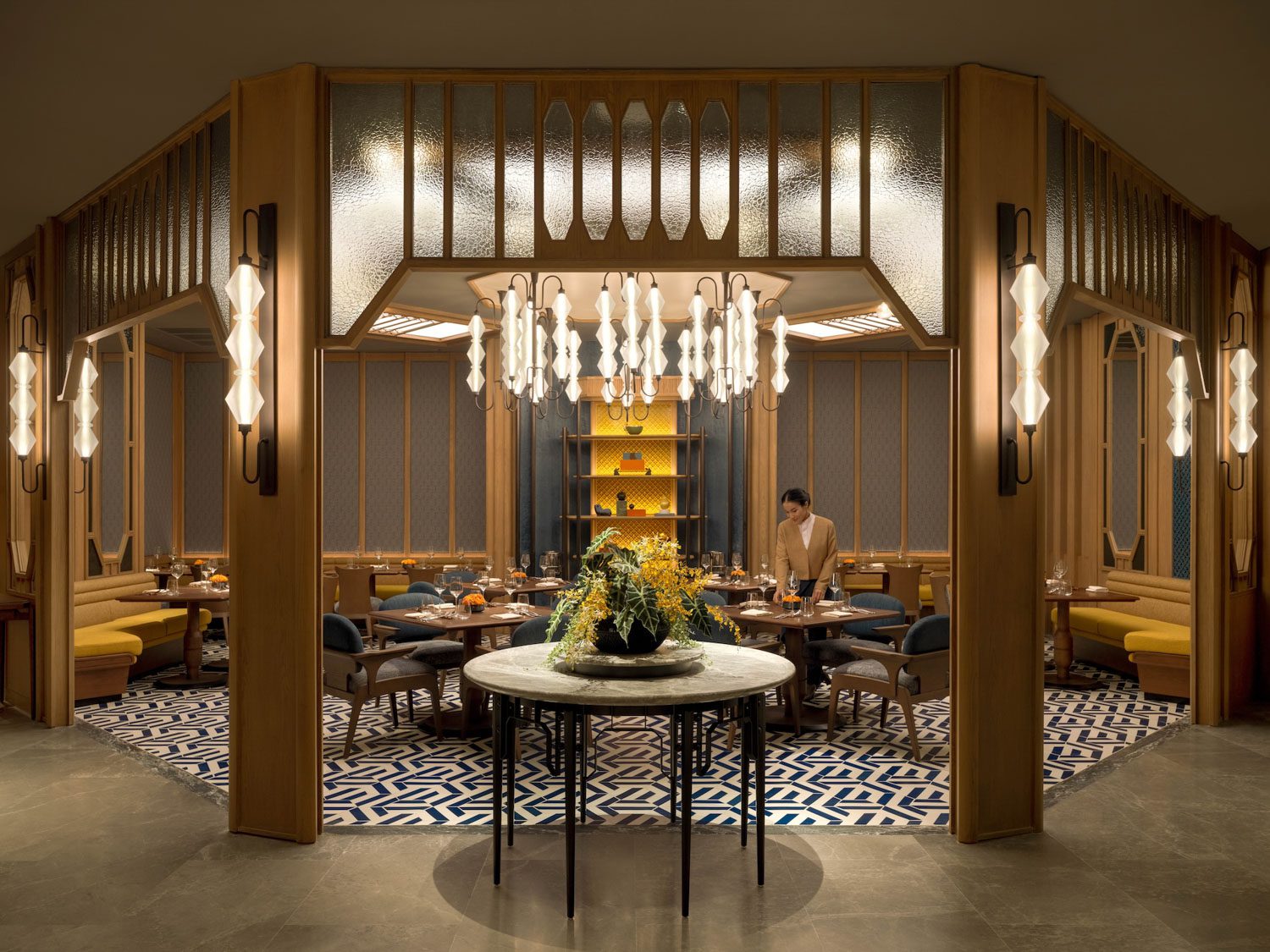

The reawakening of the Dusit Thani Bangkok Hotel is merely the prologue to the much larger narrative of the Dusit Central Park project, nestled in the pulsating heart of Bangkok’s Central Business District. With several facets of the hotel yet to spring to life—including its eclectic bars and eateries—the full scope of what Dusit Thani will ultimately offer remains tantalizingly on the horizon.


